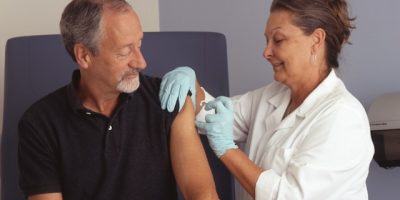Introduction
Patient Elopement, in simple terms, if we derive the Patient Elopement Definition, is a patient who cannot safeguard himself appropriately and leaves the medical institution unaccompanied and unnoticed.
Healthcare security faces new problems in developing policies and procedures to avoid and handle such occurrences due to the financial and regulatory repercussions of bad events related to patient elopements.
Caring for patients with mental health issues is a significant challenge for nurse leaders. Patient safety becomes a top priority when it progresses to an elopement—the uninvited patient departure from a hospital.
Patients with behavioral health issues frequently arrive at hospital emergency rooms or are admitted to a medical-surgical unit due to medical co-morbidities. Staff members may not be trained to care for this patient group.
The quality and safety of care can be enhanced by establishing Patient Elopement Guidelines that instruct personnel on how to treat patients with mental health issues.
Patient Elopement – Brief
Both healthcare professionals and patients’ relatives experience fear when they learn that a patient has “gone missing.” Elopement is described by the VA National Center for Patient Safety (NCPS) as the deliberate leaving of a facility by a patient who knows that leaving is not authorized.
In many elopement situations, the patient may have diminished mental function by dementia, momentary delirium, or intermittent mental status changes brought on by medicine, illness, or severe damage.
Patients who elope are frequently in danger of suffering significant damage, and there are many instances when patient elopement has resulted in death. However, assessing their degree of ability or purpose may not be easy.
Contrarily, a patient who “strays beyond the vision or control of personnel without the desire to leave” is said to be wandering. Wandering poses serious safety threats when the patient’s ability is diminished.
In contrast to elopement or wandering, departing against medical advice (AMA) occurs when a patient chooses to leave a facility despite being aware of the hazards involved in doing so before finishing their treatment. Legally speaking, competent patients may leave their care without finishing it.
In such circumstances, the doctor should warn the patient about the dangers of leaving. Most organizations need the patient to sign a paper acknowledging that they are aware of the dangers and that they are departing against the medical recommendation. This interaction is then noted in the patient’s medical record.
Recommendations that clarify patients’ rights and obligations while hospitalized should be offered to patients who can make decisions about their care upon admission. These Patient Elopement Guidelines should include the requirement to consult with professionals before leaving a treatment area.
Any unlawful patient elopement from a 24-hour care facility that results in a temporary death or significant permanent loss of function is considered a reportable sentinel event under the Joint Commission’s sentinel events policy. Regardless of the patient’s desire to leave or mental state, this reporting obligation reflects the extent of the harm to the patient.
Elopement (disappearance for more than 4 hours), one of the 27 significant adverse events identified by the National Quality Forum, can result in death or other serious injuries.
According to information from Joint Commission sentinel events, elopement is mainly caused by errors in patient evaluation and team communication.
Careful consideration of preventative measures through evaluation and elopement precautions and proper action once elopement occurs are required to protect patients from elopement hazards.
Elopement –Guidelines, Prevention, and care
Patient elopement is a real issue that most companies have dealt with at some point, although it is rarely spoken up about in conversation. Over 20% of individuals in the United States experience mental illness each year. According to the National Alliance on Mental Disease, 4% of people have a significant mental illness that limits their ability to engage in daily activities.
We all worry about patient elopement, especially when it comes to patients who could hurt themselves or others.
There are several ways that patients run away. Some will escape the facility if they do not have continual observation while being sent to the restroom or for a test or operation.
Whatever the cause of elopement, there are consistent, proactive approaches to equip a company and its people better to handle the problem and work better regarding Patient Elopement Prevention.
To identify patients at risk of eloping, such as those experiencing severe psychosis, dementia, or drug and alcohol withdrawal, and assess both existing procedures and the most effective procedures in the literature.
Nursing managers should know how many patients are being restrained around the hospital and how many require ongoing supervision.
Elopement can be prevented and increased safety by adequately screening patients for elopement risk factors and employing elopement safeguards. The VA Center for Patient Safety developed an elopement tool kit that includes an evaluation and potential safety measures.
The patient is at risk of eloping if they respond “yes” to any of the evaluation questions listed below:
Has a court designated a guardian for this patient?
Is this patient seen as posing a risk to himself or others?
Has this patient been formally incarcerated?
Does this patient lack the mental capacity to make sensible choices?
Is there a history of elopement or escape for this patient?
Does this patient have any physical or mental conditions that put them at higher risk of hurting himself or others?
It is expected that patients with occasional mental status changes might suffer catastrophic consequences if their ability changes when they are not adequately monitored. Because of this, the doctor and nurses must have started taking elopement measures despite his impending discharge and patchy orientation.
In many aspects of patient care, professional judgment is necessary. Patient safety should come first and act as a compass for all decisions. When it comes to competent patients who have left the region without alerting personnel, the appropriate course of action is determined by the circumstances.
For specific organizations, a 45-minute absence initiates the patient search and elopement process. When it is relatively confident that the patient has left without permission, other organizations feel an elopement reaction is required. Units should have protocols for patients to sign out or otherwise communicate with the nursing staff before leaving the area to avoid needless searches.
Patient Elopement Code, the reaction to elopement, sometimes known as “Code Green,” involves both actions by staff in the location where the patient is absent and an organization-wide response. These actions are typically included in a protocol:
- Unit personnel alerts the operator that there is an elopement or Code Green.
- Security is notified, along with a description of the missing patient and any relevant clinical data.
- They are letting the patient’s doctor know.
- Quick unit personnel search of the unit and vicinity.
- Security personnel immediately searched the hospital and its surroundings.
- The physician informs the patient’s family.
- Security will when necessary, notify the police.
- The proper administrative staff is informed.
Organizations have different procedures. However, the most important thing is to take reasonable steps to get the patient back to a secure location.
Patients who have been out for a long time, usually 4 hours or more, are readmitted rather than returned to their unit. Other businesses utilize midnight as their signal. For particular rules, providers should refer to organization policies.
Any patient with diminished mental ability who has left the unit or treatment area without permission should prompt an urgent organizational reaction.
All staff members should get proper training, and healthcare institutions should have policies and procedures outlining the measures workers are to take in any elopement situation.
These protocols should incorporate evaluation and preventative processes to lessen the risk of injury for people with impaired ability.
These preventative actions can involve putting the patient on an observation schedule (special precautions for patients requiring frequent or constant monitoring).
Patients may be seated at the desk, have an electronic monitoring device attached when possible, be paired with a roommate, or ask a family member or nursing staff to sit with them.
Automated door locks, alarms, and distraction techniques are frequently used in mental health and rehabilitation facilities.
We are still determining whether there was no established policy for the personnel to adhere to or whether they just disregarded it. The ED personnel would probably be aware of the missing patient and would have observed that he was in their area before discharging him if inpatient staff had triggered a Patient Elopement Code or Code Green kind of reaction (provided that the procedure notified all areas of the facility).
Effective communication of such an occurrence across the whole business is crucial to find the patient and securely transferring him to the proper level of care.
The usage of electronic methods to prevent elopement is expanding due to the ongoing personnel shortage and the growing complexity of patient care. Radiofrequency (RF) device use can be crucial, especially when combined with regular risk assessment and effective teamwork.
When patients venture too far from their room, wristbands connected to signal-detecting sensors inside the facility can sound an alert. This aids staff members who might not notice when a patient leaves because they are preoccupied with other patients.
The alarm system may be connected to programs that shut doors automatically in some establishments. One-on-one monitoring of at-risk patients was no longer required in one ED because of RF devices and a modified triage process.
A few checkpoints listed below are essential aspects of elopement that should be followed in organizations:
Security throughout the hospital
With multi-layer security, STANLEY Healthcare has you covered for everything from the ED to Behavioral Health to Pediatrics.
Constant patient safety
Patients are always guarded against the potential of elopement and flight, and notifications are immediately produced for prompt action.
Assurance for family members and careers
Knowing that patients have constant security against wandering and elopement gives caregivers and family members peace of mind.
Greater effectiveness
With the help of STANLEY Healthcare’s patient security solutions, manual monitoring is no longer necessary, and all patients are visible to the caregivers.
Decreased risk of unfavorable events
The ubiquitous safety dangers brought on by wandering and elopement in hospitals are combated through ongoing electronic patient protection.
Since the patient’s physical and mental impairments may prevent them from being able to take care of their safety, there is always a legal need to exert reasonable care and attention to the patient’s safety. It is the responsibility of healthcare workers to ensure a safe environment on the premises and to oversee and observe patients effectively.
Additional culpability may result from negligent medicine administration or neglect to provide medications, failing to notify the doctor of changes in the patient’s condition, and failing to adequately seek for the patient after eloping.
Patients like the one in this situation who have limited capacity are dangerous to themselves and potentially to others. Failure to launch an urgent system-wide search increased the patient’s risk and exposed the doctors and organization to liability risk.
Improvements in outcomes for patients at risk of elopement, cost savings, and liability reduction for caregivers and the organization can all be achieved by linking adequate assessment, precautions, good team communication, modern technology, and quick system response with the overarching goal of safe patient care.
Elopement – At a Glance
Elopement is a significant incident that calls for a coordinated, system-wide reaction.
The two leading causes of elopement incidents are team communication breakdown and patient evaluation.
At admission and various points throughout their hospital stay, patients should have their risk of eloping evaluated.
Special preventative measures should be instituted for patients who may elope.
When a patient with impaired ability elopes, the unit personnel, security, and, if necessary, local authorities should respond right away.
Precautions for elopements will be specified in the plan of care.
Elopement notices will be posted on the patients and the entrance doors to the unit. Unit doors should be kept shut.
Adult patients at risk for elopement will be identified by wearing yellow hospital gowns.
Depending on the patient’s condition, the care team may choose to deploy a patient sitter for patients who are assessed to be at urgent risk.
The patient will be assessed until there is no longer a danger of elopement.
Any modifications will be reflected in the nursing narrative. There are specific procedures for responding to patients who have eloped.
Conclusion
Patients must consent to treatment to get care at medical institutions. On entering a facility and frequently during a hospital stay, patients must provide their approval for certain operations. The patient’s decision to receive care must be respected when they are cognitively capable and can collaborate ultimately with medical experts.
Competent patients who decide to stop receiving treatment at any point cannot be held responsible for doing so. This undermines confidence and harms the facility’s reputation. Furthermore, providers can be accused of abuse, assault, or wrongful imprisonment.














Comments